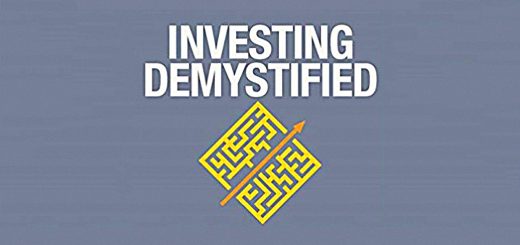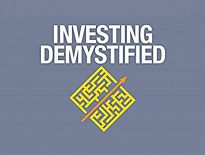Investing Demystified 4 – Implementation

Today’s post is our fourth visit to a book that is popular with passive investors in the UK – Lars Kroijer’s Investing Demystified.
Lars Kroijer
Lars Kroijer’s book is increasingly popular on the UK finance subreddits.
- He has an economics degree from Harvard, and an MBA from the business school there.
Until 2008, Lars was a hedge fund manager.
- He now works at Alliedcrowds.com, which “aggregates alternative capital into the world’s lower-income countries”.
Investing Demystified
Here’s a recap of what we’ve covered so far:
- Lars is a 100% passive investor and pushes what I would call a “Lazy Portfolio” of only two funds.
- These are suboptimal, particularly for investors with larger portfolios.
- I see the appeal of lazy portfolios to novice investors, but that’s not the same as saying they are the best option.
- Lars thinks that markets are quite efficient, and the majority of people are not able to outperform them.
- Truly efficient markets would not exhibit simple outperformance factors like momentum, value, small size, low volatility and quality.
- Volatility parity portfolios with factor and trend-following overlays will outperform on a risk-adjusted basis.
- Lars thinks that we need only two assets – stocks and government bonds.
- Other bonds (international and corporate) are also allowed.
- I think there are many alternative assets that can add value to a portfolio.
- Commodities, private equity, VC, precious metals and hedge funds are obvious examples.
- The max SR portfolio will need to be juiced up to give higher returns by using a higher equities allocation.
- Lars likes market cap weighting.
- Market-cap weighted indices are by definition averages, and 50% of market participants should beat them (before costs).
- Market cap weighting is a poor way to construct an index or to weight a portfolio.
- Equal weighting is better, and volatility parity is even better (across assets and geographies as well as within a single stock market).
- Market cap indices are inappropriate as benchmarks for private investors – you need your own benchmark that reflects the likely composition of your portfolio
- Lars is against home bias, and I am not.
- He is however in favour of “Away Bias” – a large allocation to the US.
- Lars objects to the idea that the future will be like the past.
- I would say that it’s the best data we have, and what is the alternative?
- Lars targets returns of 5% pa real from equities, which I think is a little optimistic.
- We agree on equity volatility of around 20%.
- Lars notes the great losses that are possible in stock markets, with two falls by more than 50% in the Dow since 1900, and another 6 falls between 40% and 50%.
- Recovery times for buy and hold range from 25 years for the 1929 crash to four years for the 2000 dot com bubble and the 2008 crisis.
- Of course, the Japanese market hasn’t yet recovered from the 1990s crash.
- Lars reiterates the importance of diversification, though he points out that it works least when you need it the most (correlations increase during crashes).
- Non-listed assets need to be taken into account when assigning portfolio weightings.
Plans
Lars covers the basics of working out how much money you will have/need in retirement:
- How much you start with
- Your contributions
- Returns rates
- Costs and taxes.
He looks at some examples using Monte Carlo analysis.
- I’m not a massive fan of Monte Carlo because it ignores sequencing effects in real-life equity returns.
But this is not a massive issue during the accumulation phase of investment.
Lars’ main point is that equity returns can theoretically lead to wide variations in outcomes over several decades.
- I’m not sure that focusing on these extremes is helpful.
In practice, the variations from a well-diversified portfolio will be lower.
- And during accumulation, investors can contribute more or less than planned to stay on track.
We can also accept a lower income in retirement, or allocate a higher proportion of our money to equities.
- Decumulation is much trickier, but we have the fail-safe withdrawal rate (just over 3% pa, for a portfolio that is 75% equities) to fall back on.
Lars also makes the point to have enough of a buffer so that you don’t need to sell during a crash like 2009.
Lifestyling
Lars believes in lifestyling – increasing the proportion of bonds in the portfolio as you age.
- He suggests the “age in bonds” rule, or alternatively the “years to retirement in equities”, which would mean you had 90% bonds when ten years from retirement.
I think this is a relic of the past, from a time when people were forced to buy an annuity when they retired.
- This practice left them open to severe sequencing risk in the years before retirement.
A few bad years might undo the good work of decades of saving.
- With the introduction of drawdown in the UK, this risk has disappeared.
Even into retirement, the optimum long-term portfolio (in terms of the maximum withdrawal rate that it can support) contains 75% equities.
- See our series on the work done by ERN on SWRs for more details
Lars also believes in the 4% rule for withdrawals.
- This is not good advice – even those with a high equity allocation should not withdraw much more than 3% pa.
There’s more on this here.
And Lars believes you should take a risk tolerance questionnaire, to work out what your exposure to equities might be.
- You can find ours here.
Expenses
Chapter 11 is about expenses, or as I call them, costs.
- We agree with Lars that costs matter.
And that taxes matter.
Products
As you would imagine, Lars favours ETFs and index funds (a subset of OEICs) for implementing his portfolios.
- I prefer ETFs because I like to use listed assets with real-time pricing.
ETFs should be liquid, tax-efficient and low cost.
- Liquidity is often related to size (market cap).
He has a list of suggestions for his lazy portfolios.
- I suggest that you check out the much more comprehensive list of ETFs in the Perfect Portfolio instead.
He also lists some sites where you can research ETFs but omits my favourite – justETF.com
- And he lists some brokers, but again omits the two that I would use for ETF portfolios – iWeb and X-O.
Rebalancing
Lars recommends threshold rebalancing, with 10% bands.
- I recommend 20% bands, checked every two weeks.
He stresses that cashflow rebalancing is best.
- I would add that you should only sell stocks when you are above your target allocation (few people are) and you should use a momentum filter to avoid buying into a down-trending market.
He also recommends yearly reviews, whereas I would say you need to leave a minimum gap of 18 months to take advantage of trends.
Conclusions
That’s it for today – we’ve now covered twelve out of fifteen chapters.
- I’ve found the last few chapters very frustrating, as they make quite a number of recommendations that I can’t support.
It’s always disappointing when popular books don’t give the best advice.
The final chapters of the book will cover pensions, insurance, apocalypse investing and a wish-list for improvements to the financial sector.
- Until next time.















